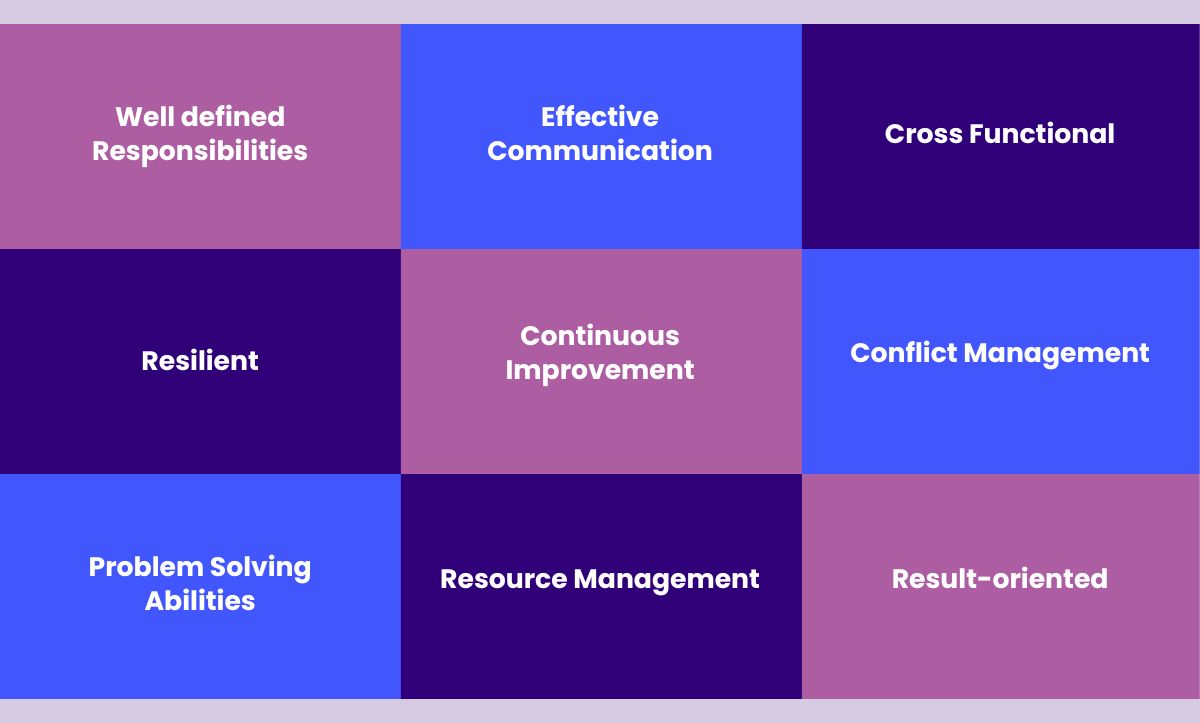
Thriving in Uncertainty: A Guide to Building Agile Teams
In today’s fast-paced and rapidly changing business landscape, building agile teams has become a top priority for corporate leaders. According to a recent survey, 87% of organizations believe that agility is essential to their success. It’s no wonder that leading companies such as Amazon, Microsoft, and Google have embraced agile methodologies to stay ahead of the competition.
Building agile teams is like building a race car – it requires a skilled team, the right tools, and a focus on speed and agility. As Larry Page, co-founder of Google, once said, “If you’re not moving forward, you’re moving backward.” In order to stay ahead of the curve, companies must be able to adapt quickly to changing market conditions and customer needs.
Agile teams are designed to do just that – to move quickly and efficiently, to pivot when necessary, and to stay focused on delivering value to the customer. According to Satya Nadella, CEO of Microsoft, “The companies that are going to succeed are those that can embrace change, that can pivot quickly, that can work in a collaborative way.”
In this blog, we will explore practical tips for building and managing agile teams in your organization. So, buckle up and get ready to build a winning team that can thrive in today’s world of uncertainty.
Understanding Agility
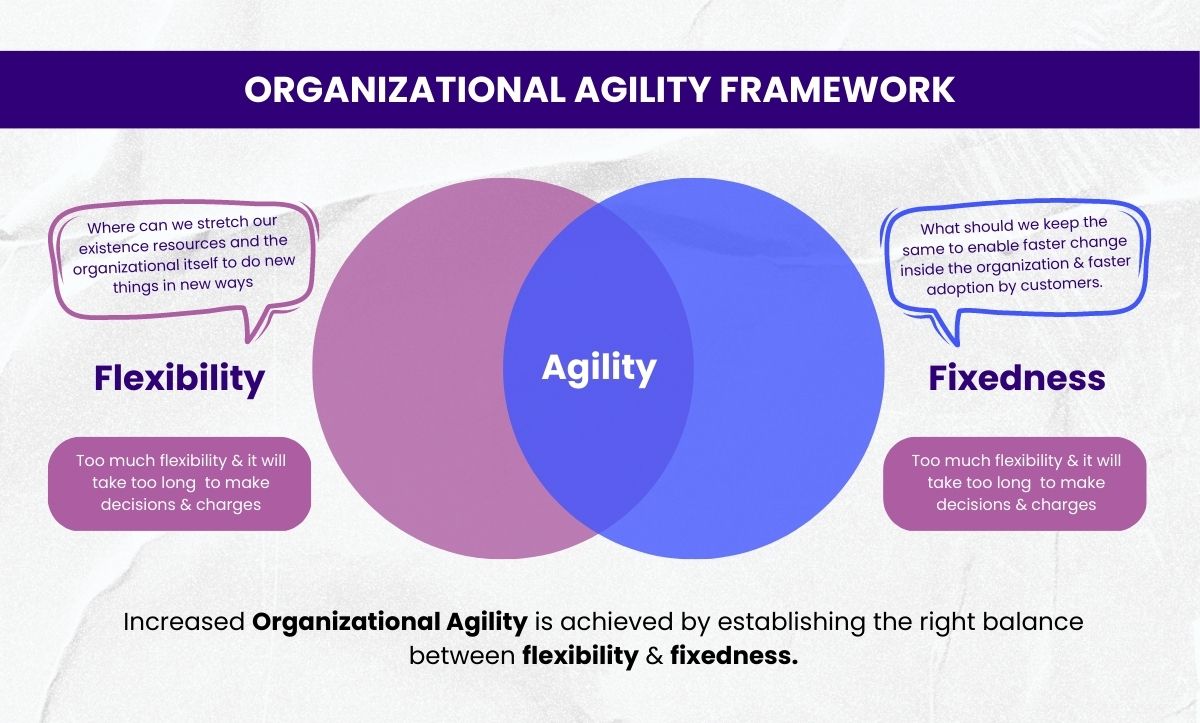
Agility is the ability to move quickly and easily in response to changing circumstances. It’s like being a gymnast who can easily pivot and perform a variety of moves in response to any situation.
Think of a gymnast who is faced with a sudden change in the balance beam routine. They must be able to adjust quickly and seamlessly to maintain their balance and perform their routine flawlessly. Similarly, an agile team must be able to adjust quickly to new situations, such as changes in project scope or customer requirements, and still deliver high-quality results.
Another analogy for agility is a sports team. A football team that is agile can quickly adapt their strategy based on the strengths and weaknesses of their opponents. They are constantly analyzing the game, making adjustments, and working together to achieve their goals.
Similarly, an agile team in the workplace is able to adapt to changing market conditions, customer needs, and emerging technologies. They are constantly analyzing data, gathering feedback, and making adjustments to their strategy in order to stay ahead of the competition and deliver value to their customers.
In short, it requires the ability to quickly adapt to changing circumstances, work together towards a common goal, and continuously improve. Companies that embrace agility can stay ahead of the competition and deliver value to their customers in today’s fast-paced and ever-changing business landscape.
Benefits of having agile teams
Agile teams offer numerous benefits for organizations that want to stay competitive in today’s fast-paced business landscape. Here are some of the key benefits of having agile teams:
- Faster time-to-market: Agile teams are designed to work in short iterations and deliver small but valuable increments of work. According to the 15th Annual State of Agile Report, 71% of organizations that adopt agile methodologies report faster time-to-market for their products and services. This approach allows organizations to quickly respond to changing customer needs and market conditions, and get their products and services to market faster.
- Improved collaboration: Agile teams work in a highly collaborative environment, with team members from different disciplines working together to achieve a common goal. This approach fosters communication, teamwork, and shared ownership of the project, leading to higher levels of engagement and job satisfaction.
- Better quality: Agile teams prioritize delivering value to the customer, which means they are constantly testing and refining their work. This focus on quality results in fewer defects, higher customer satisfaction, and ultimately, better business outcomes.
- Increased flexibility: Agile teams are able to adapt quickly to changing requirements or priorities. A survey conducted by McKinsey found that agile organizations are up to six times more likely to report greater levels of organizational flexibility compared to non-agile organizations. This means that organizations can pivot their strategies in response to new information or market conditions, and remain competitive in the face of uncertainty.
- Enhanced innovation: Agile teams are encouraged to experiment and take calculated risks. A study by PwC found that companies that adopt agile methodologies are twice as likely to report higher revenue growth compared to non-agile organizations.
This mindset fosters a culture of innovation, where team members are constantly looking for new and better ways to deliver value to the customer.
Also,Read: Best Corporate Training & Leadership Development Programs 2023
How to measure agility in teams
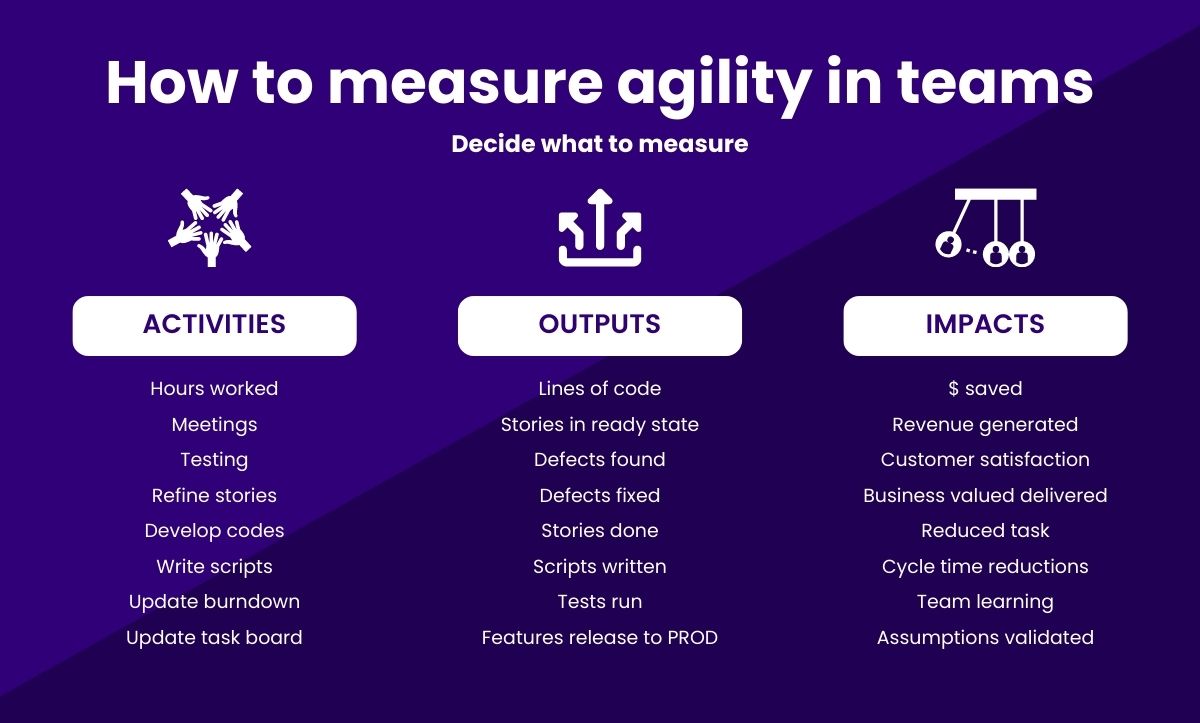
Measuring agility in teams is an important step towards improving it. Here are some popular strategies used by companies like Google, Amazon, IBM, and Accenture to measure agility:
- Agile maturity assessment: This involves evaluating the team’s current level of agility based on criteria such as the team’s ability to adapt to change, the degree of collaboration among team members, and the team’s ability to deliver value to the customer.
- Velocity tracking: This involves measuring the amount of work a team can complete in a given period of time, and using this information to track progress and identify areas for improvement.
- Sprint retrospectives: This involves regular team meetings where team members reflect on the previous sprint and identify areas for improvement in terms of collaboration, communication, and efficiency.
- Customer satisfaction surveys: This involves gathering feedback from customers on the team’s ability to deliver value and meet their needs. This feedback can be used to identify areas for improvement and to measure the team’s success in delivering customer value.
- Continuous improvement: This involves a culture of continuous improvement, where teams are encouraged to experiment, try new things, and learn from their mistakes. By continuously learning and adapting, teams can improve their agility over time.
Ready to build agile teams and navigate uncertainty?
Connect with us today to learn more about our training and development programs and take your organization to the next level
Identifying and Addressing Challenges
Identifying and addressing the challenges that teams face in uncertain times is critical to maintaining their effectiveness and productivity. By recognizing challenges, teams can take proactive steps to address these issues. By addressing these challenges head-on, teams can build resilience and thrive in even the most uncertain of times.
Common challenges faced by teams in uncertain times
Teams face numerous challenges in uncertain times. Here are some common challenges that teams may face:
- Lack of clarity: Uncertainty can lead to a lack of clarity about goals, expectations, and priorities. This can make it difficult for teams to focus on what’s important and can lead to confusion and disengagement.
- Communication breakdowns: When teams are working remotely or under high levels of stress, communication breakdowns can occur. This can lead to misunderstandings, missed deadlines, and increased conflict.
- Burnout: Uncertainty can cause stress and anxiety, which can lead to burnout. Burnout can manifest as fatigue, lack of motivation, and decreased productivity.
- Lack of resources: In uncertain times, teams may face resource constraints, including limited budgets, reduced staff, or lack of access to necessary technology or tools.
- Difficulty adapting: Uncertainty can require teams to adapt quickly to changing circumstances. However, not all team members may be comfortable with change, which can make it difficult to pivot quickly and effectively.
- Loss of connection: When teams are working remotely or in isolation, there can be a loss of connection and camaraderie that can impact morale and productivity.
Strategies for addressing challenges
Here are some strategies that teams can use to address the challenges they may face in uncertain times, along with examples of companies that have successfully implemented these strategies:
- Improve communication and collaboration: Encouraging open communication, regular check-ins, and collaboration among team members can help address communication breakdowns. For example, Atlassian, a software company, uses a tool called “Confluence” that allows teams to share information and collaborate on projects in real-time.
- Prioritize self-care and work-life balance: Providing resources and support for self-care, such as mental health services and flexible work arrangements, can help address burnout. For example, Salesforce, a cloud computing company, offers employees wellness programs that include meditation and mindfulness training, yoga classes, and healthy food options.
- Invest in resources and technology: Providing teams with the necessary resources and technology can help address resource constraints. For example, Accenture, a consulting company, has developed a platform called “myLearning” that provides employees with access to training and development resources.
- Provide training and support: Providing training and support for new skills and approaches can help address difficulties adapting. For example, Google offers its employees “Agile Coach” training to help teams adopt agile methodologies.
- Foster a culture of flexibility and adaptability: Encouraging a culture of flexibility and adaptability can help teams embrace change and navigate uncertainty. For example, Zappos, an online shoe and clothing retailer, has a “Holacracy” management structure that empowers teams to self-organize and adapt quickly to changing circumstances.
Also, read: Only 50% of leadership training programs yield the desired results ~ Why?
Case studies of companies that have successfully navigated uncertainty
Here are some examples of how some of the companies you listed have successfully navigated uncertainty:
Google: In the early 2000s, Google faced uncertainty as it competed against established search engines such as Yahoo! and AOL. The company responded by focusing on its core search technology and introducing new products such as AdWords, AdSense, and Google Analytics.
Google also expanded into new markets such as mobile, social media, and cloud computing, and diversified its offerings with products such as Google Maps, Gmail, and YouTube.
IBM: In the 1990s, IBM faced uncertainty due to declining sales and the rise of competitors such as Microsoft and Dell. The company responded by shifting its focus from hardware to software and services, and investing heavily in research and development.
IBM also embraced open-source and collaborated with other companies and governments to develop new technologies and standards.
Accenture: During the global financial crisis of 2008-2009, Accenture faced uncertainty as clients reduced their spending on consulting and outsourcing services. The company responded by reducing its costs, diversifying its offerings, and expanding its global reach.
Accenture also invested in digital technologies and analytics, and developed new partnerships and alliances with other companies and organizations.
Facebook: In the early 2010s, Facebook faced uncertainty as it struggled to monetize its growing user base and compete against rivals such as Google and Twitter. The company responded by introducing new advertising and targeting options, and expanding its platform with new features such as Messenger, Instagram, and WhatsApp.
Facebook also invested in virtual reality and artificial intelligence, and developed new initiatives such as Internet.org to connect more people to the internet.
LinkedIn: In the early years of LinkedIn, the company faced uncertainty as it struggled to gain traction and compete against established players such as Monster.com and CareerBuilder. The company responded by focusing on its core value proposition of professional networking and recruitment, and expanding its offerings with new products such as Sales Navigator, Learning Solutions, and Talent Solutions.
LinkedIn also invested in content marketing and thought leadership, and developed new partnerships and integrations with other companies such as Microsoft and Salesforce.
Apple: Apple has faced uncertainty in recent years as it has relied heavily on the iPhone for its revenue and profits. The company has responded by diversifying its offerings with new products such as the Apple Watch, AirPods, and HomePod, and expanding its services such as Apple Music, Apple TV+, and Apple Pay.
Apple has also invested in augmented reality, artificial intelligence, and autonomous vehicles, and has continued to focus on design, innovation, and customer experience.
Netflix: When Netflix first started as a DVD rental service, it faced uncertainty due to the emergence of online streaming services and the decline of physical media. The company responded by pivoting to streaming and investing heavily in original content, such as House of Cards and Stranger Things.
Netflix also expanded its global reach, entering new markets such as India and Brazil, and diversified its offerings with new genres and formats such as documentaries and interactive shows.
Building Agile Teams
Building agile teams involves creating a work environment that encourages collaboration, flexibility, and continuous learning. It requires leaders to empower team members to make decisions, experiment, and take risks, all while maintaining a clear focus on the team’s goals.
Agile teams also rely heavily on communication, transparency, and feedback loops to adapt to changing circumstances and make course corrections when necessary. By building agile teams, organizations can respond quickly to market changes, deliver products and services faster, and ultimately gain a competitive advantage.
Agile teams are a group of individuals who work together to achieve a common goal through the use of an agile methodology. The following are some characteristics that are often associated with agile teams:
- Collaboration: Agile teams emphasize collaboration among team members, stakeholders, and customers. They work together to share ideas and knowledge, solve problems, and make decisions.
- Adaptability: Agile teams are adaptable and flexible. They can quickly and easily change course when necessary to respond to changing requirements or customer needs.
- Iterative approach: Agile teams use an iterative approach to development, breaking down work into smaller pieces and continuously iterating on them.
- Continuous improvement: Agile teams are focused on continuous improvement. They regularly review their processes and outcomes to identify areas for improvement.
- Customer focus: Agile teams are customer-focused. They work closely with customers to understand their needs and deliver value to them.
- Empowerment: Agile teams are empowered to make decisions and take ownership of their work. They are given the autonomy and resources they need to succeed.
- Transparency: Agile teams are transparent. They share information openly, communicate regularly, and use data to make informed decisions.
- Cross-functional: Agile teams are cross-functional, meaning they are composed of individuals with a range of skills and expertise needed to deliver the product or service. This includes developers, designers, product managers, and other roles as required.
Strategies for building and managing agile teams
Building and managing an agile team requires a combination of strategies that are designed to encourage collaboration, adaptability, and continuous improvement. Here are some strategies that can help build and manage an agile team:
- Define roles and responsibilities: It is important to clearly define the roles and responsibilities of each team member. This ensures that everyone understands their role in the project and can work collaboratively towards the common goal.
- Establish a team culture: Create a team culture that encourages collaboration, open communication, and continuous learning. This can be achieved by setting team norms, conducting regular team-building activities, and recognizing team achievements.
- Empower the team: Give the team the autonomy to make decisions and take ownership of their work. This can be achieved by setting clear goals and providing resources and support to achieve them.
- Use an agile methodology: Use an agile methodology, such as Scrum, Kanban or XP to manage the work. This allows the team to work in an iterative and incremental manner, respond quickly to changing requirements, and continuously improve the quality of the product.
- Focus on continuous improvement: Encourage the team to regularly reflect on their work and identify areas for improvement. This can be achieved through regular retrospectives, feedback sessions, and sharing best practices.
- Foster open communication: Establish open communication channels that allow team members to share information, ask questions, and provide feedback. This can be achieved through regular stand-up meetings, one-on-one meetings, and online collaboration tools.
- Invest in training and development: Provide opportunities for team members to learn new skills and advance their careers. This can be achieved through training programs, mentoring, and coaching.
- Monitor progress: Regularly monitor the team’s progress towards achieving the project goals. This can be achieved through project management tools, progress reports, and regular team meetings.
Tools and resources for building agile teams
There are many tools and resources available to help build and manage agile teams. Here are some examples:
Agile methodologies: There are several agile methodologies to choose from, such as Scrum, Kanban, and Extreme Programming (XP). Each has its own unique set of principles and practices that can help guide the team’s development process.
Project management tools: Project management tools like Jira, Trello, Asana, and Monday.com can help manage the team’s work and keep everyone on track. They allow teams to create and manage tasks, track progress, and communicate with team members.
Collaboration tools: Collaboration tools like Slack, Microsoft Teams, and Zoom can help team members stay connected and communicate effectively, no matter where they are located. These tools can be used for team meetings, video conferencing, and messaging.
Agile coaching and training: Agile coaching and training programs can help teams learn new agile methodologies, practices, and principles. This can be especially helpful for teams that are new to agile or need additional support to become more effective.
Retrospective tools: Retrospective tools like Retrium, FunRetro, and Miro can help teams reflect on their work and identify areas for improvement. These tools can be used to conduct virtual retrospectives and gather feedback from team members.
Agile books and blogs: There are many books and blogs on agile development that can provide insights and guidance for building and managing agile teams. Some popular books include “Scrum: The Art of Doing Twice the Work in Half the Time” by Jeff Sutherland and “The Lean Startup” by Eric Ries.
Agile communities: Agile communities, such as the Agile Alliance and Scrum.org, can provide networking opportunities and access to resources, events, and training programs. These communities can be a great way to connect with other agile practitioners and learn from their experiences.
How Does Learning and Development Help Develop Agile Teams?
Learning and development play a crucial role in building agile teams. By investing in learning and development, organizations can equip their teams with the skills and knowledge they need to be effective in an agile environment. Here are some ways in which learning and development can help drive the building of agile teams:
Agile methodology training: Agile methodology training can help team members understand the principles, practices, and values of agile development. This can include training in Scrum, Kanban, and other agile methodologies. By understanding these methodologies, teams can work together more efficiently and effectively.
Soft skills training: Soft skills training, such as communication, collaboration, and problem-solving, can help team members work together more effectively. By improving their soft skills, team members can build better relationships with each other and with stakeholders, and be more effective in their roles.
Technical training: Technical training can help team members develop the technical skills they need to build and maintain software products. This can include training in programming languages, software development tools, and other technical skills that are necessary for agile development.
Continuous learning culture: Building a culture of continuous learning can help teams stay up-to-date with the latest developments in agile development. This can include providing access to online courses, attending conferences and workshops, and encouraging team members to share their knowledge and expertise with each other.
Coaching and mentoring: Coaching and mentoring can help team members develop their skills and reach their full potential. This can include one-on-one coaching sessions with an experienced agile coach or mentor, or peer-to-peer mentoring within the team.
Feedback and evaluation: Regular feedback and evaluation can help team members understand their strengths and weaknesses and identify areas for improvement. This can include regular performance reviews, peer feedback, and retrospectives.
By investing in learning and development, organizations can help their teams become more effective in an agile environment, which can ultimately lead to better outcomes for the business and its customers.
Leading Through Uncertainty
Leading through uncertainty requires a combination of skills, strategies, and qualities. By embracing uncertainty and leading with confidence and purpose, leaders can guide their organizations through periods of change and turbulence and emerge stronger on the other side.
Characteristics of effective leaders in uncertain times
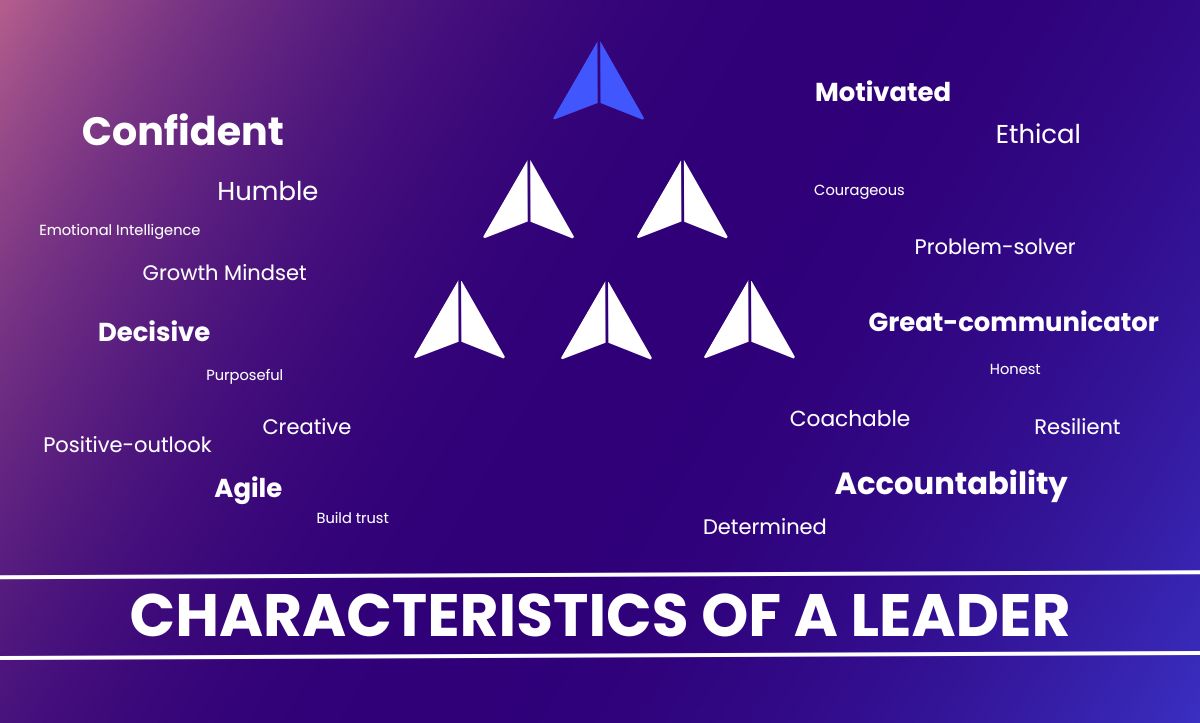
Effective leaders in uncertain times exhibit certain characteristics that enable them to guide their organizations through periods of change, ambiguity, and turbulence. Here are some characteristics of effective leaders in uncertain times:
- Visionary: Effective leaders have a clear vision of where they want to take their organization, even in times of uncertainty. They communicate this vision effectively to their team, inspiring them to work towards a common goal.
- Resilient: Effective leaders are resilient in the face of adversity. They are able to bounce back from setbacks, adapt to changing circumstances, and maintain a positive outlook in the face of challenges.
- Decisive: Effective leaders are decisive, even in times of uncertainty. They are able to make tough decisions based on the information available, and are not afraid to take calculated risks.
- Empathetic: Effective leaders are empathetic towards their team members, understanding their concerns and fears in uncertain times. They are able to communicate with empathy and build trust with their team.
- Collaborative: Effective leaders are collaborative, working closely with their team to find solutions to complex problems. They seek input and feedback from their team members, and involve them in decision-making processes.
- Innovative: Effective leaders are innovative, constantly looking for new ways to solve problems and improve their organization. They are willing to experiment with new ideas and approaches, and encourage their team members to do the same.
- Transparent: Effective leaders are transparent in their communication, sharing information openly and honestly with their team members. They are willing to admit when they don’t have all the answers, and are open to feedback and criticism.
- Authentic: Effective leaders are authentic, leading with integrity and staying true to their values. They are able to build trust with their team members by being genuine and honest in their communication and actions.
Effective leaders in uncertain times exhibit a combination of these characteristics, which enable them to navigate their organization through periods of change and turbulence.
Strategies for leading teams through uncertainty
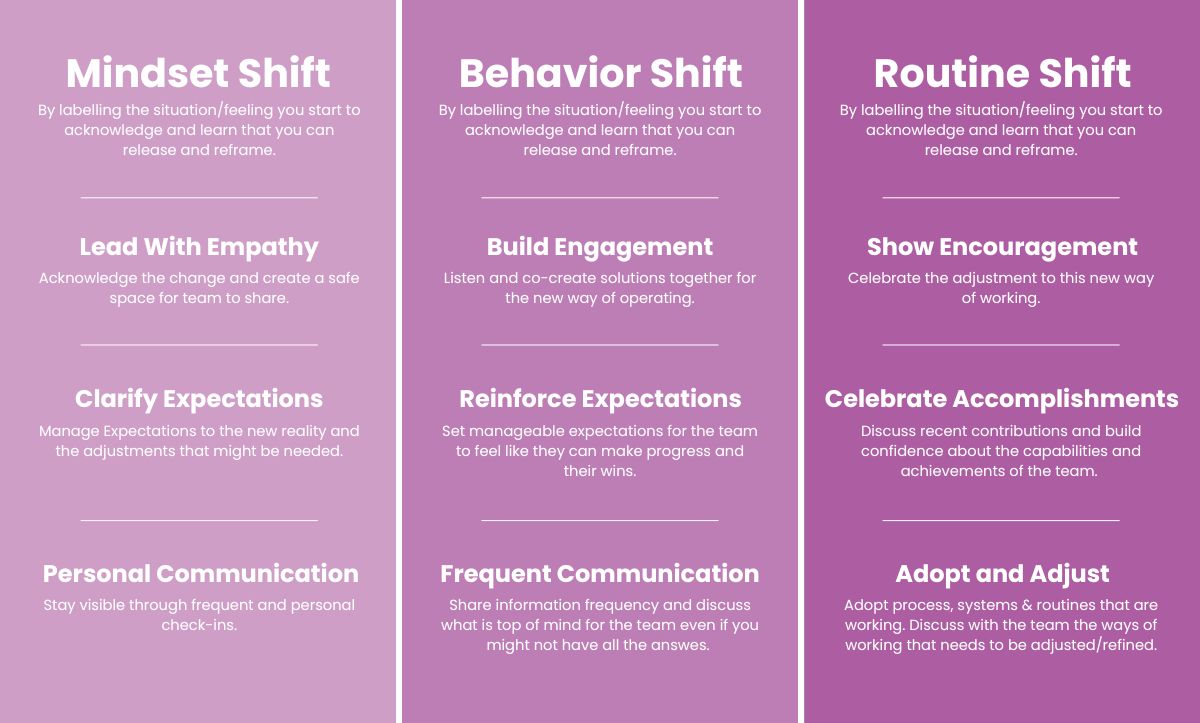
Here are some strategies for leading teams through uncertainty, along with examples to illustrate how they can be applied:
- Communicate regularly and transparently: During uncertain times, it’s important to communicate regularly and transparently with your team to keep them informed and engaged.
For example, if your organization is facing financial difficulties, you could share the company’s financial situation with your team and discuss how the organization plans to address the issue. By being open and honest, you can build trust with your team and help them feel more invested in the organization’s success.
- Set clear priorities: In times of uncertainty, it’s important to set clear priorities to help your team focus their efforts.
For example, if your organization is facing a sudden change in the market, you could prioritize the development of new products or services that better meet the needs of customers. By setting clear priorities, you can help your team stay focused and motivated, even in the face of uncertainty.
- Encourage experimentation: Uncertain times often require experimentation and a willingness to try new approaches.
For example, if your organization is facing a sudden shift in consumer behavior, you could encourage your team to experiment with new marketing strategies or product features. By encouraging experimentation, you can help your team adapt to changing circumstances and find new opportunities for growth.
- Foster collaboration and teamwork: During uncertain times, it’s important to foster collaboration and teamwork to help your team work together more effectively.
For example, if your organization is facing a sudden increase in demand for your products or services, you could encourage your team to work together to identify ways to increase efficiency and productivity. By fostering collaboration and teamwork, you can help your team overcome challenges and achieve their goals.
- Provide support and resources: During uncertain times, it’s important to provide your team with the support and resources they need to succeed.
For example, if your organization is facing a sudden shift to remote work, you could provide your team with the necessary technology and resources to work effectively from home. By providing support and resources, you can help your team feel valued and supported, even in the face of uncertainty.
By implementing these strategies, you can help lead your team through uncertain times and emerge stronger on the other side.
Final Takeaways
Building agile teams is crucial for organizations that want to remain competitive and adapt to the rapidly changing business environment. Agile teams are flexible, collaborative, and able to quickly respond to new challenges and opportunities.
To build agile teams, organizations need to invest in the development of their team members, promote a culture of continuous improvement, and encourage experimentation and innovation. Effective leaders play a critical role in building agile teams, providing clear direction, setting expectations, and creating a supportive environment where team members can thrive.
By investing in building agile teams, organizations can benefit from increased productivity, higher quality output, and greater employee engagement and retention. Moreover, agile teams can help organizations remain adaptable and responsive to changing market conditions, customer needs, and technological advancements.
What Next?
At The Star in Me, we offer a range of training and development programs designed to help organizations build agile teams and improve their overall performance.
Whether you’re looking to develop leadership skills, improve team collaboration and communication, or enhance your organization’s innovation capabilities, our programs can help.
Contact us today to learn more about how we can help you build agile teams that drive success and growth.

LinkedIn Caption
Looking to build agile teams that drive success and growth?
Check out our latest blog post on “Thriving in Uncertainty: A Guide to Building Agile Teams” and learn about the skills, strategies, and qualities that effective leaders need to navigate uncertainty and build high-performing teams.
Our blog post offers practical tips and insights on how to promote collaboration, foster innovation, and develop the skills needed to succeed in today’s rapidly changing business environment.
Contact us today to learn more about our training and development programs and take your organization to the next level!

